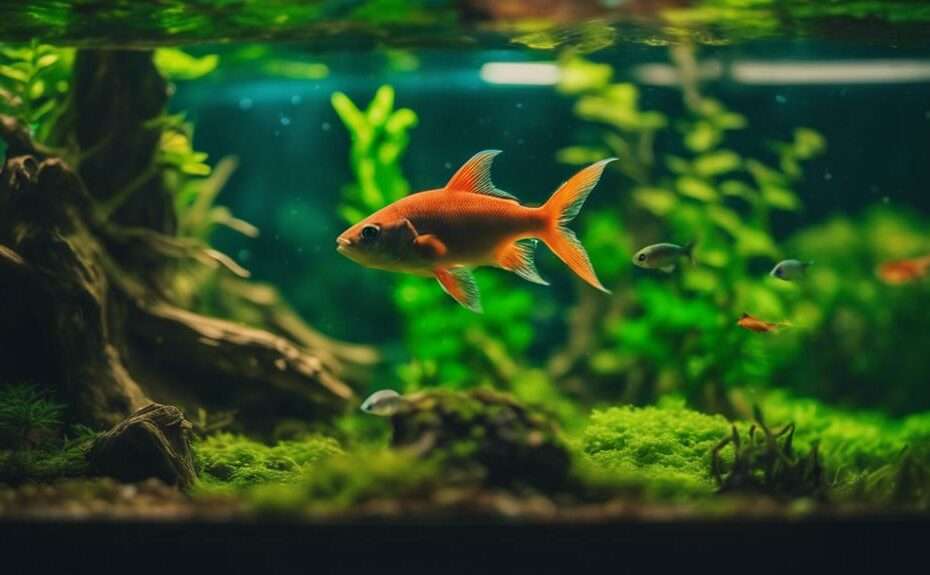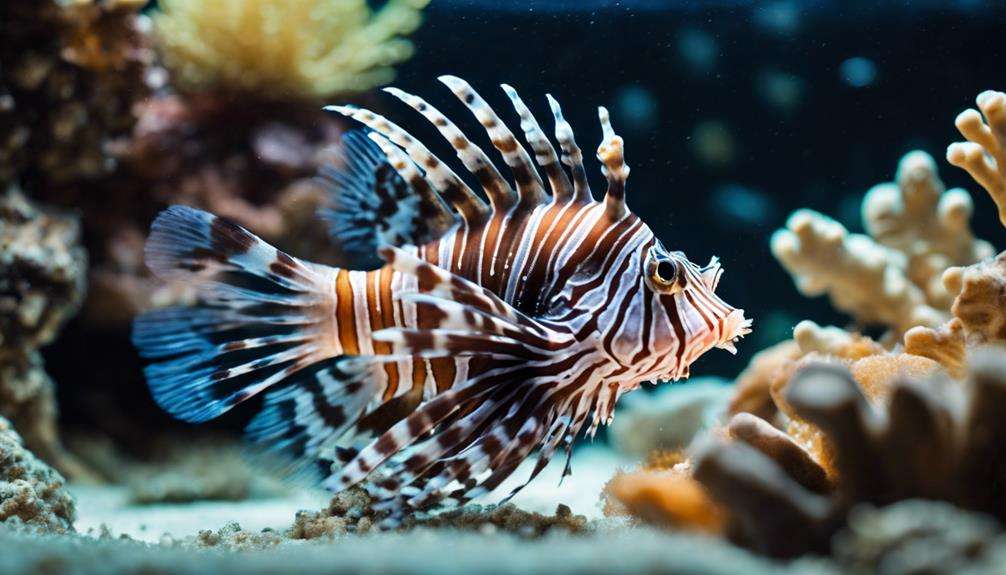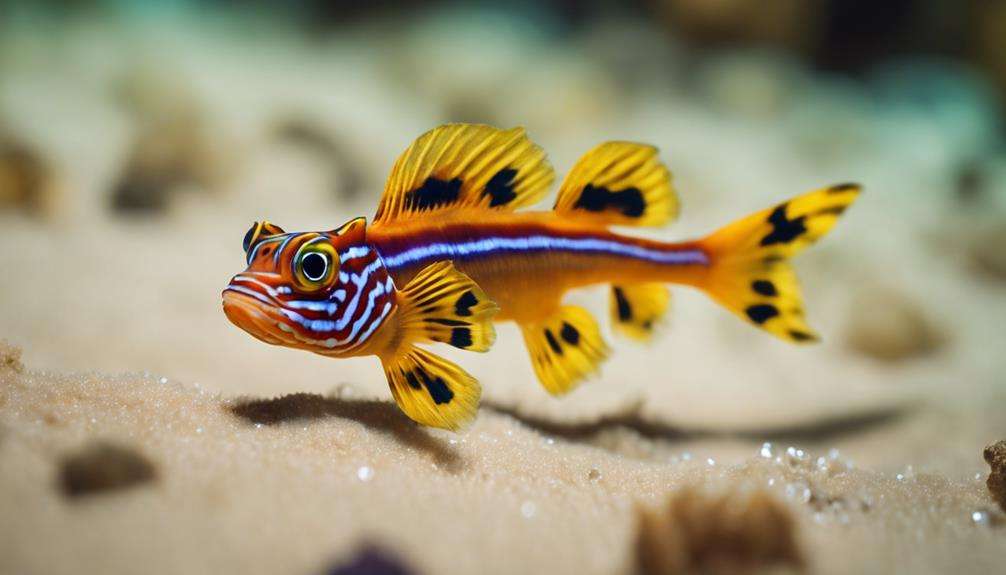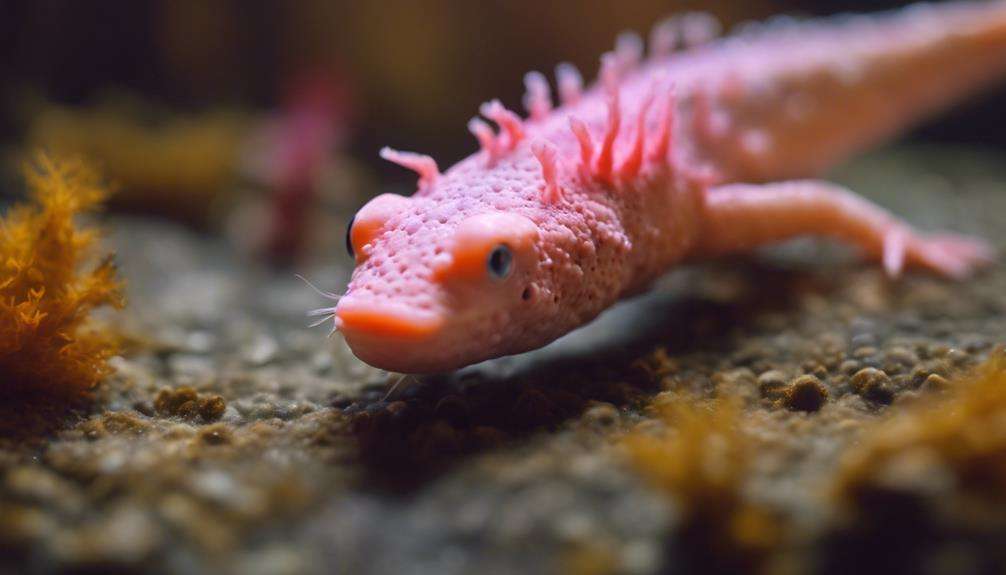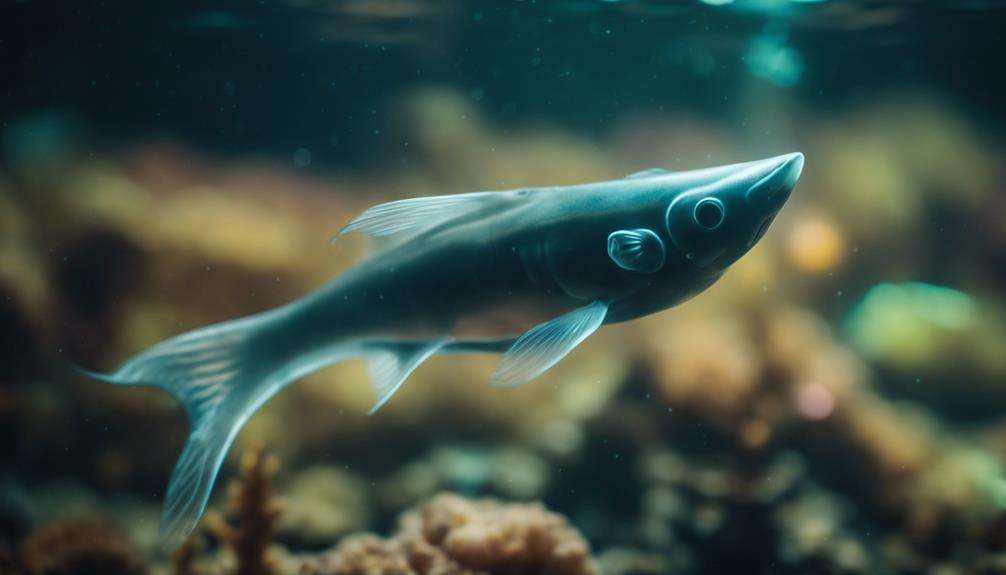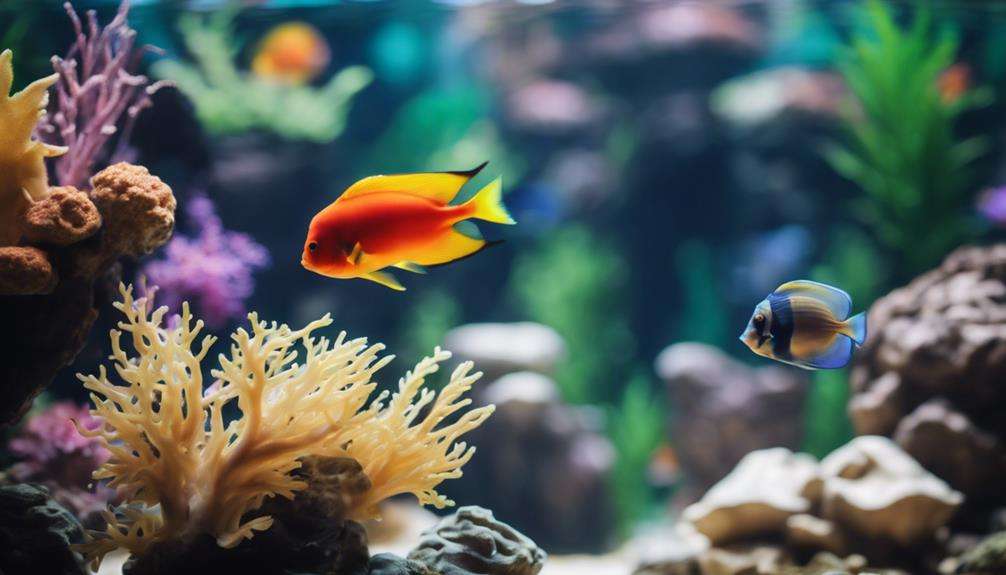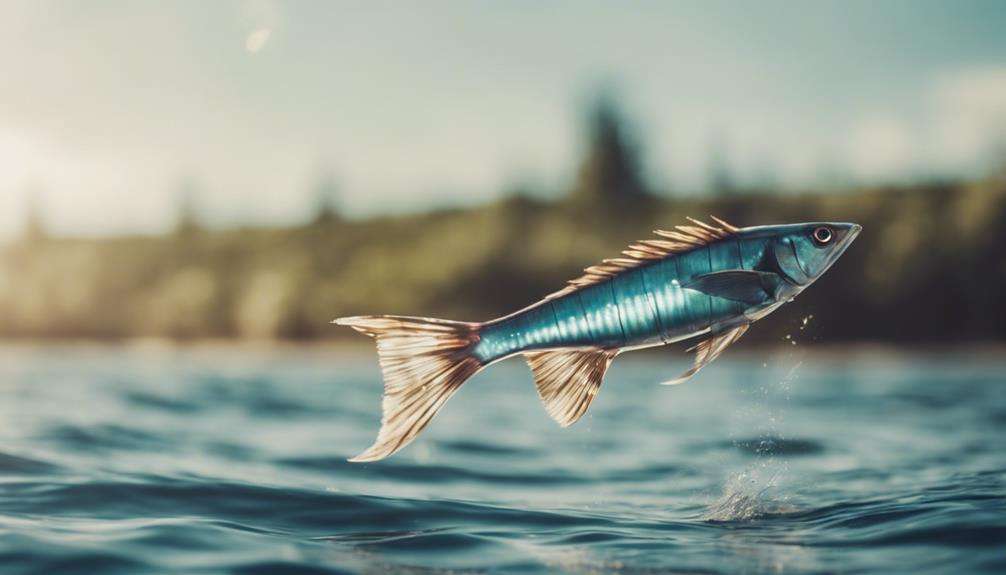If you're caring for Vampire Tetras, did you know that these striking fish can grow up to 12 inches in length?
Ensuring the well-being of these unique creatures involves attention to detail and specific care requirements.
From maintaining their carnivorous diet to creating a suitable environment, there are crucial aspects to consider to keep Vampire Tetras thriving in your aquarium.
Let's explore the key care tips that will help you provide the best possible care for these fascinating fish.
Key Takeaways
- Provide a spacious environment with proper filtration for Vampire Tetras' well-being.
- Feed a varied diet of live fish multiple times a day for their strict carnivorous needs.
- Maintain precise water parameters and monitor health regularly for longevity.
- Create an ideal tank setup with strong water currents and ample swimming space.
Care Tips for Vampire Tetras
To properly care for Vampire Tetras, ensure you provide them with a spacious environment, pristine water quality, and a diet rich in live fish. Vampire Tetras require a large tank, with a minimum size of 500 gallons for adult specimens. In captivity, these fish need ample space to swim and exhibit their natural behaviors. Additionally, maintaining excellent water quality is crucial for the health of Vampire Tetras. They thrive in pristine, highly oxygenated water with top-notch filtration to remove any waste or toxins promptly.
When it comes to feeding, Vampire Tetras are carnivorous and should be fed several times a day with live fish. Providing them with a varied diet that mimics their natural prey will help keep them healthy and vibrant. It's essential to consider the size of the live fish to prevent overfeeding or underfeeding. Ensuring a balanced diet will contribute to the overall well-being of your Vampire Tetras. Remember, a well-fed fish is a healthy fish.
Feeding Recommendations for Vampire Tetras
To ensure the optimal health of your Vampire Tetras, it's crucial to adhere to a structured feeding schedule that includes multiple feedings throughout the day.
Offering a variety of suitable food types, such as live feeder fish, is necessary to meet their strict carnivorous dietary needs.
Failing to provide the right diet can result in health complications and a shortened lifespan for these unique fish.
Optimal Feeding Schedule
Feeding Vampire Tetras a diet of live animals multiple times a day is essential to meet their carnivorous dietary requirements. These sharp-toothed fish need a consistent supply of feeder fish, such as guppies or minnows, to thrive.
Vampire Tetras are often available for sale in pet stores, but their upkeep can be costly due to the need for live fish. It's crucial to vary their diet with different types of live fish to ensure they receive a balanced nutrition profile. Failure to eat adequately can lead to health issues and a shortened lifespan.
Suitable Food Types
When selecting suitable food types for Vampire Tetras, prioritize a diverse range of live fish to meet their carnivorous dietary needs effectively. These carnivorous fish have specific nutritional requirements that are best met through a varied diet.
Here are some recommendations for feeding Vampire Tetras:
- Offer live bloodworms to provide essential nutrients.
- Include live brine shrimp in their diet for variety.
- Consider feeding them live blackworms for a different texture.
- Introduce live daphnia to ensure a balanced diet.
Remember to feed your Vampire Tetras several times a day to keep them healthy and prevent a shortened lifespan due to refusal to eat in captivity. By offering a mix of live animals, you can ensure your Tetras receive the necessary nutrients for their well-being.
Ideal Aquarium Setup for Vampire Tetras
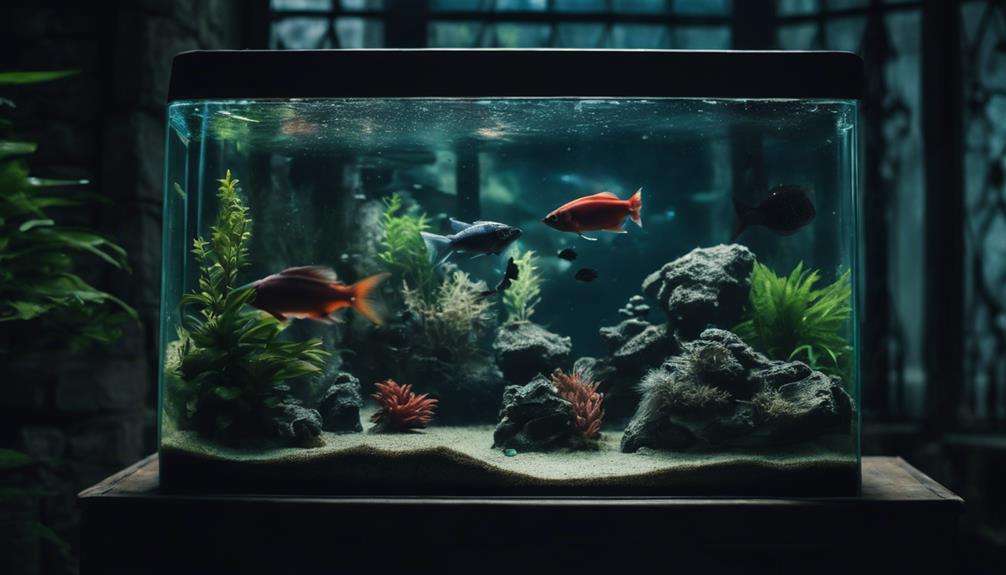
To ensure the well-being of your Vampire Tetras, it's crucial to provide them with a substantial tank size of at least 500 gallons.
Maintaining suitable water parameters, including strong water currents, is vital for their health and vitality.
When selecting tank mates, opt for species that can withstand the Tetras' active nature and won't become prey due to their aggressive feeding habits.
Tank Size Requirements
For ideal care of Vampire Tetras, ensuring a tank size of at least 500 gallons is essential to support their predatory nature and overall well-being. These fish require ample space to thrive and exhibit their natural behaviors.
To create an ideal aquarium setup for Vampire Tetras, consider the following:
- Tank Size: A minimum of 500 gallons is crucial for these large predatory fish.
- Water Current: Strong water currents should be incorporated to mimic their natural habitat.
- Open Spaces: Provide open spaces for fast swimming to keep them active and healthy.
- Secured Lid: Due to their swift swimming behavior, ensure the tank has a secure lid to prevent escapes and injuries.
A well-sized tank plays a vital role in the longevity and well-being of Vampire Tetras.
Water Parameters for Health
To maintain the health and well-being of Vampire Tetras in captivity, ensuring precise water parameters within their ideal aquarium setup is paramount.
Vampire Tetras thrive in water temperatures between 75.0 – 82°F, with a preferred pH level ranging from 6.0 to 8.0 in their aquarium environment. For wild-caught Vampire Tetras, maintaining water hardness levels between 2 to 25 dGH is essential to mimic their natural habitat.
To support their longevity, it's crucial to provide a well-maintained tank with specific setups like advanced filtration systems and proper water flow. Creating a habitat with a dark tank surface and an open middle section for swimming space is also vital for the comfort of Vampire Tetras in captivity.
Suitable Tank Mates
Maintaining an ideal aquarium setup for Vampire Tetras includes carefully selecting suitable tank mates that are large and fast-moving to coexist harmoniously. When choosing tank mates for Vampire Tetras, consider adding:
- Silver Dollars
- Arowanas
- Larger Tetras
- Avoid smaller or slower fish
These larger and more robust fish like Silver Dollars, Arowanas, and larger Tetras can better handle the aggressive nature of Vampire Tetras. It's crucial to avoid pairing them with smaller or slower fish that may be seen as prey.
Additionally, ensure that all tank mates have adequate space and hiding spots to reduce potential aggression and territorial behavior in the aquarium setup.
Social Behavior of Vampire Tetras
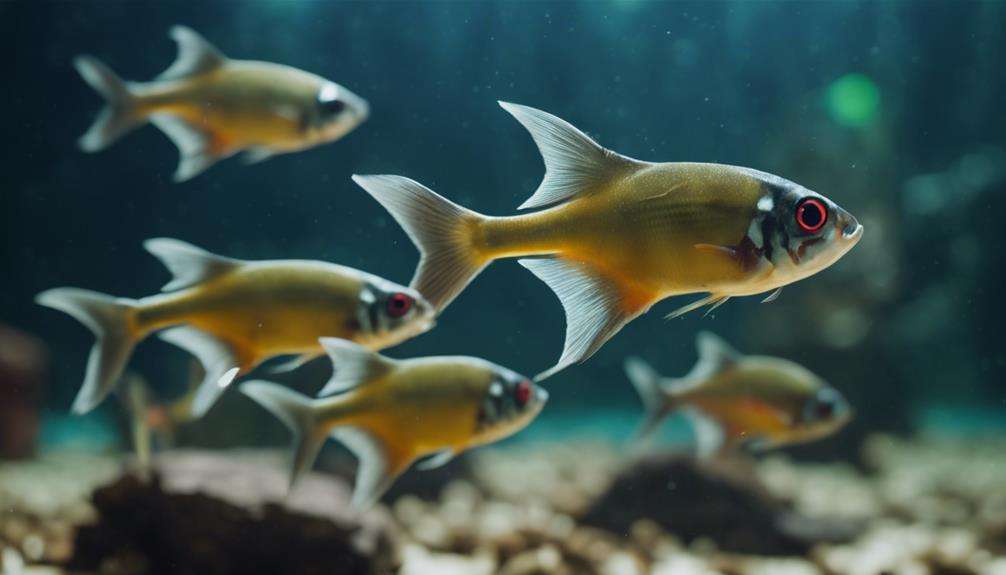
Demonstrating a tendency towards schooling behavior, Vampire Tetras are commonly observed in large groups in their natural habitat, showcasing their social nature. In captivity, these tetras can exhibit aggression, particularly if not kept in sufficient numbers. To minimize aggression and stress, it's recommended to maintain Vampire Tetras in schools of six or more individuals. When housed in smaller groups, they may become hostile towards their own kind. Moreover, Vampire Tetras can display high levels of aggression towards other fish species, especially if these fish are perceived as too large to be considered prey.
For the well-being of the Vampire Tetras and to prevent conflicts with other fish, it's advisable to keep them in single-species tanks. This helps create a harmonious environment that's conducive to their social behavior. Understanding and accommodating the social dynamics of Vampire Tetras are crucial for ensuring a thriving community within the aquarium setting.
Breeding Guidelines for Vampire Tetras
Breeding Vampire Tetras in captivity presents a unique challenge due to the limited understanding of their reproductive behaviors and the complexities involved in creating suitable breeding conditions. Since there are no documented successful breeding reports for Vampire Tetras in home aquariums, it highlights the intricate nature of their breeding process.
Here are some guidelines to consider when attempting to breed Vampire Tetras:
- Maintain Water Quality: Ensure the water parameters are optimal for breeding, including temperature, pH levels, and cleanliness.
- Provide Adequate Space: Offer a spacious tank with suitable hiding spots and plants to mimic their natural habitat.
- Monitor Behavior: Watch for any signs of aggression or territorial disputes among the fish, which could hinder breeding attempts.
- Replicate Migratory Conditions: Mimic the natural migratory patterns of Vampire Tetras by adjusting lighting and temperature to encourage spawning behavior.
Successfully breeding Vampire Tetras in captivity requires patience, attention to detail, and a deep understanding of their migratory instincts and breeding preferences.
Disease Prevention for Vampire Tetras
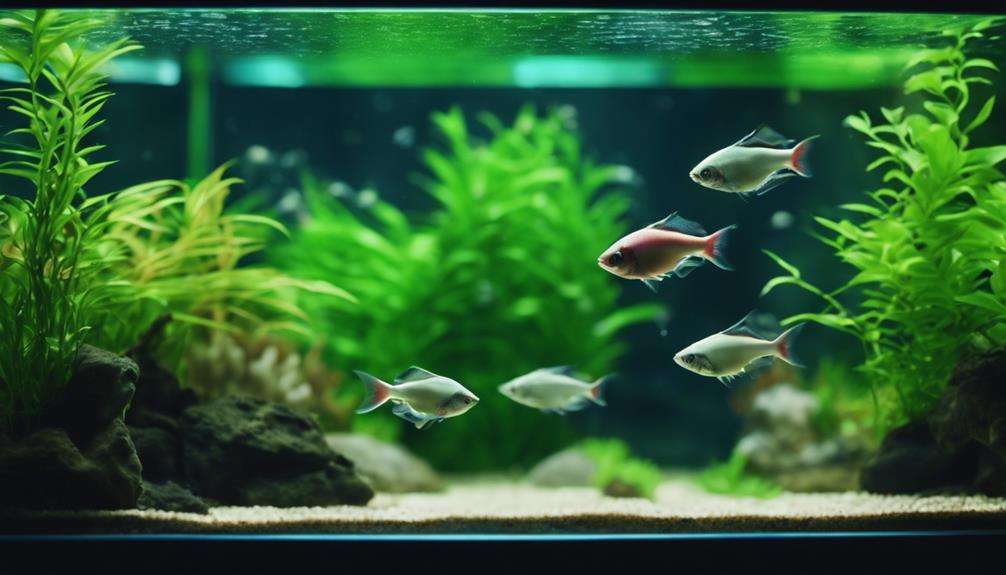
To safeguard the health of your Vampire Tetras, meticulous attention to water quality and preventive measures against diseases is paramount. Regularly monitor water quality parameters such as pH, ammonia, nitrites, and nitrates to ensure a stable and healthy aquatic environment for your fish. Quarantine new additions to the tank before introducing them to the main population to prevent the spread of diseases and parasites. Overfeeding should be avoided as it can lead to poor water quality, which in turn increases the susceptibility of Vampire Tetras to diseases.
Performing regular water changes is essential to keep the tank clean and reduce stress on the fish. Clean water helps maintain the overall health of your Vampire Tetras and minimizes the risk of diseases. If you notice any signs of illness in your fish, act promptly by treating them with appropriate medications to prevent the disease from spreading to other tank inhabitants. By following these disease prevention tips, you can help ensure a healthy and thriving environment for your Vampire Tetras.
Frequently Asked Questions
What Do You Need to Take Care of Tetras?
For tetras, you need pristine water quality, a spacious tank, precise temperature control, and a consistent lighting schedule. These factors are crucial for their well-being and longevity. Make sure you provide them with the best care possible.
What Do Vampire Tetras Eat?
Satisfy the voracious appetite of Vampire Tetras with live fish, their lifeblood. Their feeding habits demand frequent meals to meet their nutritional needs. Remember, flake food won't cut it; opt for live or meaty options to ensure their vitality.
What Do Tetras Like in Their Tank?
In the tank, Tetras enjoy decorations providing hiding spots and plants for security. Maintain water parameters stable for their well-being. Consider tank mates carefully to prevent aggression. Follow a lighting schedule that mimics their natural habitat.
Are Tetras High Maintenance?
Tank decorations provide hiding spots for Vampire Tetras. Ensure stable water parameters like pH and temperature. Stick to a regular cleaning routine for optimal health. Observe their behavior closely for signs of stress or aggression.
Conclusion
In conclusion, tending to Vampire Tetras is akin to nurturing a delicate flame in a dark forest. By providing proper care, feeding, and environment, you can unlock the mysterious beauty of these predatory fish.
Remember, they thrive in the shadows of a well-maintained aquarium, dancing gracefully in the currents of their domain.
Embrace the challenge, and you'll be rewarded with the mesmerizing allure of the Vampire Tetras.
